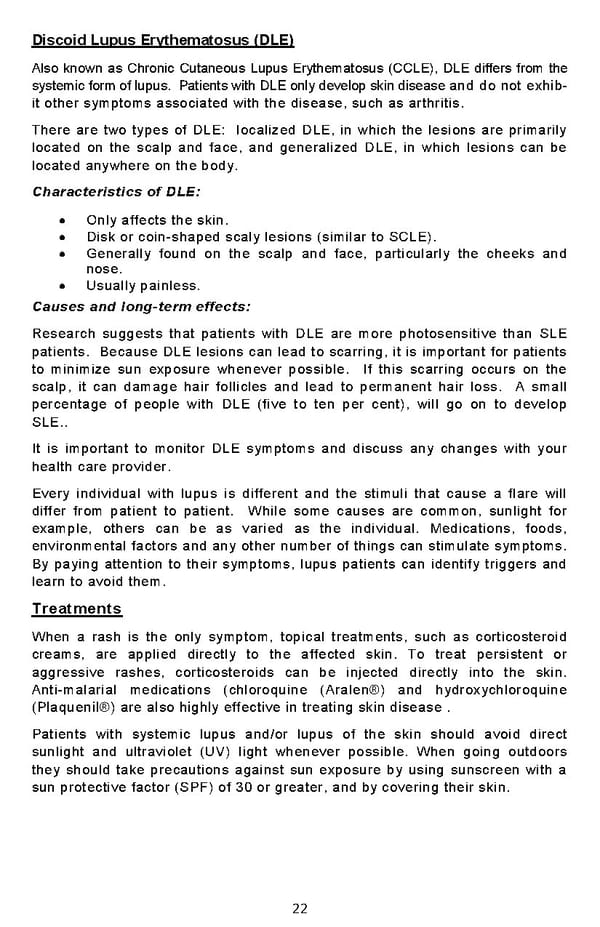Discoid Lupus Erythematosus (DLE) Also known as Chronic Cutaneous Lupus Erythematosus (CCLE), DLE differs from the systemic form of lupus. Patients with DLE only develop skin disease and do not exhib- it other symptoms associated with the disease, such as arthritis. There are two types of DLE: localized DLE, in which the lesions are primarily located on the scalp and face, and generalized DLE, in which lesions can be located anywhere on the body. Characteristics of DLE: • Only affects the skin. • Disk or coin-shaped scaly lesions (similar to SCLE). • Generally found on the scalp and face, particularly the cheeks and nose. • Usually painless. Causes and long-term effects: Research suggests that patients with DLE are more photosensitive than SLE patients. Because DLE lesions can lead to scarring, it is important for patients to minimize sun exposure whenever possible. If this scarring occurs on the scalp, it can damage hair follicles and lead to permanent hair loss. A small percentage of people with DLE (five to ten per cent), will go on to develop SLE.. It is important to monitor DLE symptoms and discuss any changes with your health care provider. Every individual with lupus is different and the stimuli that cause a flare will differ from patient to patient. While some causes are common, sunlight for example, others can be as varied as the individual. Medications, foods, environmental factors and any other number of things can stimulate symptoms. By paying attention to their symptoms, lupus patients can identify triggers and learn to avoid them. Treatments When a rash is the only symptom, topical treatments, such as corticosteroid creams, are applied directly to the affected skin. To treat persistent or aggressive rashes, corticosteroids can be injected directly into the skin. Anti-malarial medications (chloroquine (Aralen®) and hydroxychloroquine (Plaquenil®) are also highly effective in treating skin disease . Patients with systemic lupus and/or lupus of the skin should avoid direct sunlight and ultraviolet (UV) light whenever possible. When going outdoors they should take precautions against sun exposure by using sunscreen with a sun protective factor (SPF) of 30 or greater, and by covering their skin. 22
 Living Well With Lupus Facts Booklet Page 21 Page 23
Living Well With Lupus Facts Booklet Page 21 Page 23